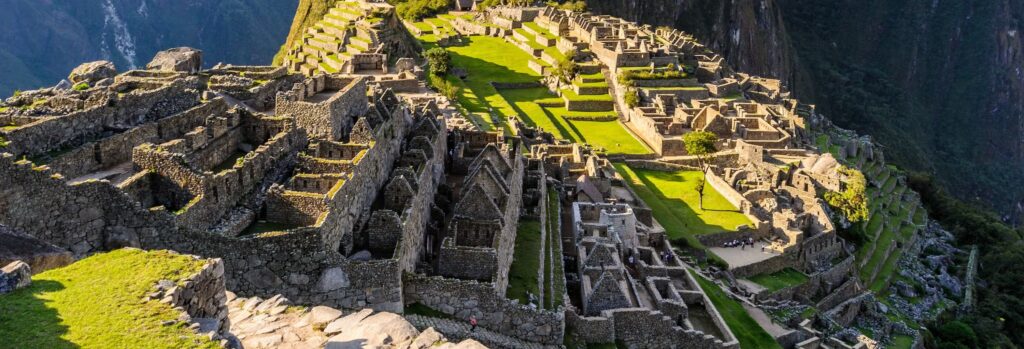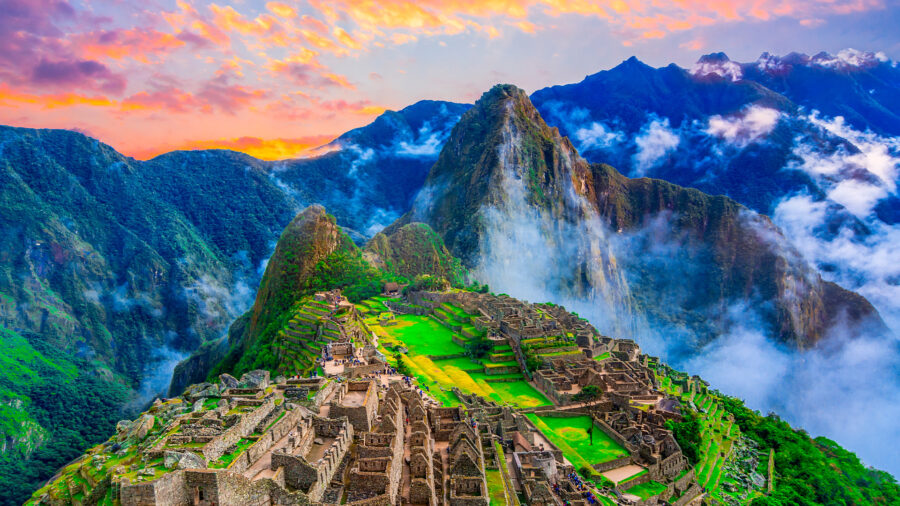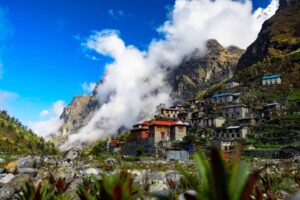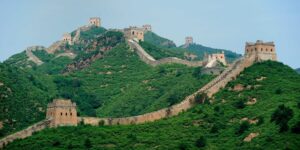Machu Picchu isn’t just another tourist destination—it’s a raw, unforgettable experience that grips your soul the moment you set foot near its ancient stone terraces. Nestled high in the Peruvian Andes, this remarkable archaeological wonder continues to defy time, standing as a testament to the ingenuity, resilience, and mystique of the Incan civilization. If you’re planning your next big adventure, buckle up, because Machu Picchu is one of those rare places that challenges everything you thought you knew about history, travel, and even yourself.
The Rich Tapestry of History

Let’s cut through the sugar-coating: Machu Picchu is real, gritty, and incredibly powerful. Built in the 15th century during the reign of Incan Emperor Pachacuti, this ancient citadel was constructed at a time when the Inca Empire was expanding rapidly across the Andean highlands. The site’s layout—an intricate network of temples, terraced fields, and residential areas—reveals advanced engineering and astronomical knowledge that still baffles modern experts. It wasn’t just built for show; every stone and every pathway had a purpose, echoing the deep spiritual and political significance of its time.
The mystery deepens with its rediscovery by American historian Hiram Bingham in 1911, which catapulted Machu Picchu from obscurity into the global spotlight. Despite its fame, the site retains an air of enigma—questions about its exact purpose and the reasons behind its abandonment still fuel debates among historians and archaeologists today.
Why Machu Picchu Captivates the Modern Traveler
Travel isn’t just about snapping photos for your social media feed. It’s about experiencing raw history firsthand, and Machu Picchu delivers that in spades. The moment you gaze over the dramatic Andean peaks and see the mist cloaking the ruins, you realize that you’re standing at the crossroads of nature, art, and ancient engineering.
Unfiltered Beauty and Unmatched Ambiance
There’s nothing artificial about the allure of Machu Picchu. It’s rugged, real, and demands respect. The way the sunlight plays on the stone walls, the echo of distant bird calls, and even the chill in the high-altitude air all contribute to an experience that feels both humbling and electrifying. Unlike many modern constructions, Machu Picchu was designed to blend seamlessly with the landscape, making it one of the best examples of sustainable architecture long before sustainability became a buzzword.
A Living Legacy of the Incan Spirit
If you’re into cultural immersion, Machu Picchu offers a deep dive into the Incan way of life. The very layout of the site, with its temples and astronomical observatories, suggests a civilization that revered nature and the cosmos. This isn’t just an archaeological site—it’s a living narrative of human innovation, community, and spirituality. Walking through its ruins, you can almost hear the whispers of ancient rituals and feel the pulse of a civilization that, despite its demise, continues to inspire millions.
How to Get There: Navigating the Journey
Now, let’s talk logistics. Reaching Machu Picchu isn’t like hopping on a bus to your local museum; it’s an adventure that demands planning, perseverance, and a hearty appetite for exploration.
The Train Ride and Alternative Routes
Most visitors opt for the scenic train ride from Cusco to Aguas Calientes, the gateway town to Machu Picchu. This journey is, in itself, a breathtaking experience. As you chug along the tracks, you’re treated to panoramic views of deep valleys, winding rivers, and towering mountains that seem to stretch forever. But if you’re up for a real challenge, consider trekking one of the several trails leading up to the site, such as the iconic Inca Trail. The trek isn’t for the faint-hearted—it’s physically demanding and requires proper acclimatization—but it rewards you with unparalleled vistas and a profound connection to the landscape.
Tips for the Journey
- Plan Ahead: With visitor numbers rising every year, securing your entrance tickets and train reservations well in advance is crucial.
- Acclimatize: Cusco sits high in the Andes, and altitude sickness is a real concern. Spend a day or two acclimatizing before embarking on your journey.
- Pack Smart: Bring comfortable walking shoes, layers for variable weather, sun protection, and plenty of water. The weather can be unpredictable, shifting from bright sunshine to sudden downpours in a matter of minutes.
The Architecture and Engineering Marvel
When you look at Machu Picchu, you’re staring at centuries of wisdom carved in stone. The Inca’s mastery over stone masonry is evident in the precise, interlocking construction that has allowed these structures to withstand earthquakes and the relentless passage of time. There’s no use for mortar here; instead, each stone was expertly cut to fit its neighbor, showcasing a deep understanding of balance and durability.
Terraced Fields and Agricultural Ingenuity
Beyond the ceremonial structures and temples, Machu Picchu is also renowned for its agricultural terraces. These stepped fields were ingeniously designed to control erosion, create microclimates, and maximize arable land. They stand as a testament to the Inca’s innovative approach to sustainable living—long before modern society was grappling with environmental challenges.
Observatories and Cosmic Alignments
The site’s Temple of the Sun and other observatories reveal the Inca’s advanced knowledge of astronomy. Alignments with celestial events were not mere coincidences; they were integral to the Inca’s religious and agricultural practices. Standing in these sacred spaces, you can’t help but feel a deep connection to the cosmos—a reminder of how ancient cultures revered the natural cycles that continue to govern our lives today.
Sustainable Tourism: Balancing Preservation and Exploration
It’s time to be brutally honest: the surge in popularity of Machu Picchu has a double-edged impact. While tourism brings much-needed revenue and global recognition, it also poses significant threats to the preservation of the site. The challenge is clear—how do we honor and protect this priceless heritage without turning it into a mass tourism spectacle?
The Impact of Overcrowding
Every year, thousands of visitors flock to Machu Picchu, and the strain on the ancient structures and surrounding environment is becoming increasingly apparent. Erosion, litter, and even the simple wear and tear from foot traffic are causing irreversible damage. Local authorities and international organizations are actively working on measures to balance access with conservation, but it’s a complex issue with no easy solutions.
A Call for Responsible Tourism
If you’re planning a visit, remember that you’re not just a tourist—you’re a temporary guardian of history. Respect the rules, stay on designated paths, and leave nothing but footprints. Supporting local conservation efforts, opting for eco-friendly travel options, and spreading awareness about the importance of preserving such sites are ways you can contribute to the sustainable future of Machu Picchu.
Beyond the Ruins: Exploring Cusco and the Sacred Valley
Your journey to Machu Picchu doesn’t end at the ruins. In fact, the region around Cusco and the Sacred Valley is teeming with history, culture, and breathtaking landscapes that further enrich your travel experience.
Cusco: The Historical Heart of Peru
Often considered the gateway to Machu Picchu, Cusco is a city where the past and present coexist in a fascinating blend of colonial and Incan influences. Wander through its cobbled streets, explore vibrant markets, and visit ancient ruins that pepper the outskirts of the city. Cusco offers a unique opportunity to see how modern Peruvians continue to celebrate and preserve their heritage.
The Sacred Valley: Nature’s Masterpiece
Stretching between Cusco and Machu Picchu, the Sacred Valley is a lush, fertile area that once served as the breadbasket of the Inca Empire. Here, you’ll find picturesque villages, terraced farmlands, and traditional markets where local artisans sell handcrafted goods. The valley is not just a backdrop—it’s an integral part of the story, illustrating how ancient civilizations thrived in harmony with nature.
What to Expect: The Emotional and Physical Journey
Let’s be real: a trip to Machu Picchu is as much about the inner journey as it is about the external adventure. The physical challenges of high-altitude trekking are matched by a profound emotional impact that stays with you long after you’ve left the Andes.
The Highs and Lows of Altitude
At over 2,400 meters (7,900 feet) above sea level, Machu Picchu demands respect from your body. The initial rush of adrenaline as you ascend is quickly tempered by the reality of high-altitude fatigue and the need for proper hydration. It’s not an easy journey, but every step you take is a step closer to understanding the indomitable spirit of those who built this place centuries ago.
A Transformative Experience
There’s something transformative about standing in a place where history, nature, and human endeavor collide. Many visitors report a profound sense of clarity and introspection, as if the sheer majesty of Machu Picchu forces you to re-evaluate your own life and values. It’s not all Instagram filters and pretty angles—this is a raw, unfiltered encounter with the past that challenges you to think about the future in entirely new ways.
Forward-Thinking Reflections: Lessons for the Future
Machu Picchu isn’t just a relic of the past; it’s a living classroom for the future. The ancient Inca knew how to live in harmony with their environment, designing a city that was both functional and breathtakingly beautiful. In today’s world, where environmental degradation and unsustainable practices are rampant, there’s much we can learn from their example.
Embracing Sustainability in Modern Times
The principles that guided the Inca—sustainable agriculture, respectful coexistence with nature, and community-driven governance—are more relevant than ever. As global travelers, we need to take a hard look at how our actions impact the places we visit. Machu Picchu challenges us to adopt more sustainable practices in our own lives, to think beyond convenience, and to truly value the historical and natural treasures we are fortunate enough to witness.
Bridging the Past and the Future
What makes Machu Picchu so enduring isn’t just its physical presence, but the lessons it imparts. It’s a reminder that innovation, when combined with respect for nature and community, can produce wonders that defy time. The ruins invite us to question modern paradigms of progress and to imagine a future where technology and nature coexist in a balanced, mutually enriching relationship.
Video Machu Picchu
Final Thoughts: More Than a Destination
In the end, Machu Picchu, Peru, is not just a destination on a map—it’s a profound journey into the heart of human history and potential. It challenges you to confront the realities of both past and present, urging you to look at the world with a more critical, yet hopeful, eye. There’s no sugar-coating it: visiting Machu Picchu is hard work, filled with moments of discomfort and awe in equal measure. But it’s exactly this blend of challenge and beauty that makes it so compelling.
So, if you’re ready to step away from the sanitized, cookie-cutter travel experiences and dive into something real—something that will leave an indelible mark on your soul—Machu Picchu is waiting. It’s a place where every stone tells a story, every path leads to discovery, and every visitor becomes part of a continuum that stretches back centuries.
Pack your bags, plan your trip, and prepare for a journey that goes far beyond the physical act of travel. Machu Picchu isn’t just a bucket-list destination; it’s a call to explore, to learn, and to rethink how we interact with our world. Embrace the challenge, respect the heritage, and let the ancient whispers of the Andes guide you towards a future that values history, sustainability, and the raw, unfiltered beauty of life.



